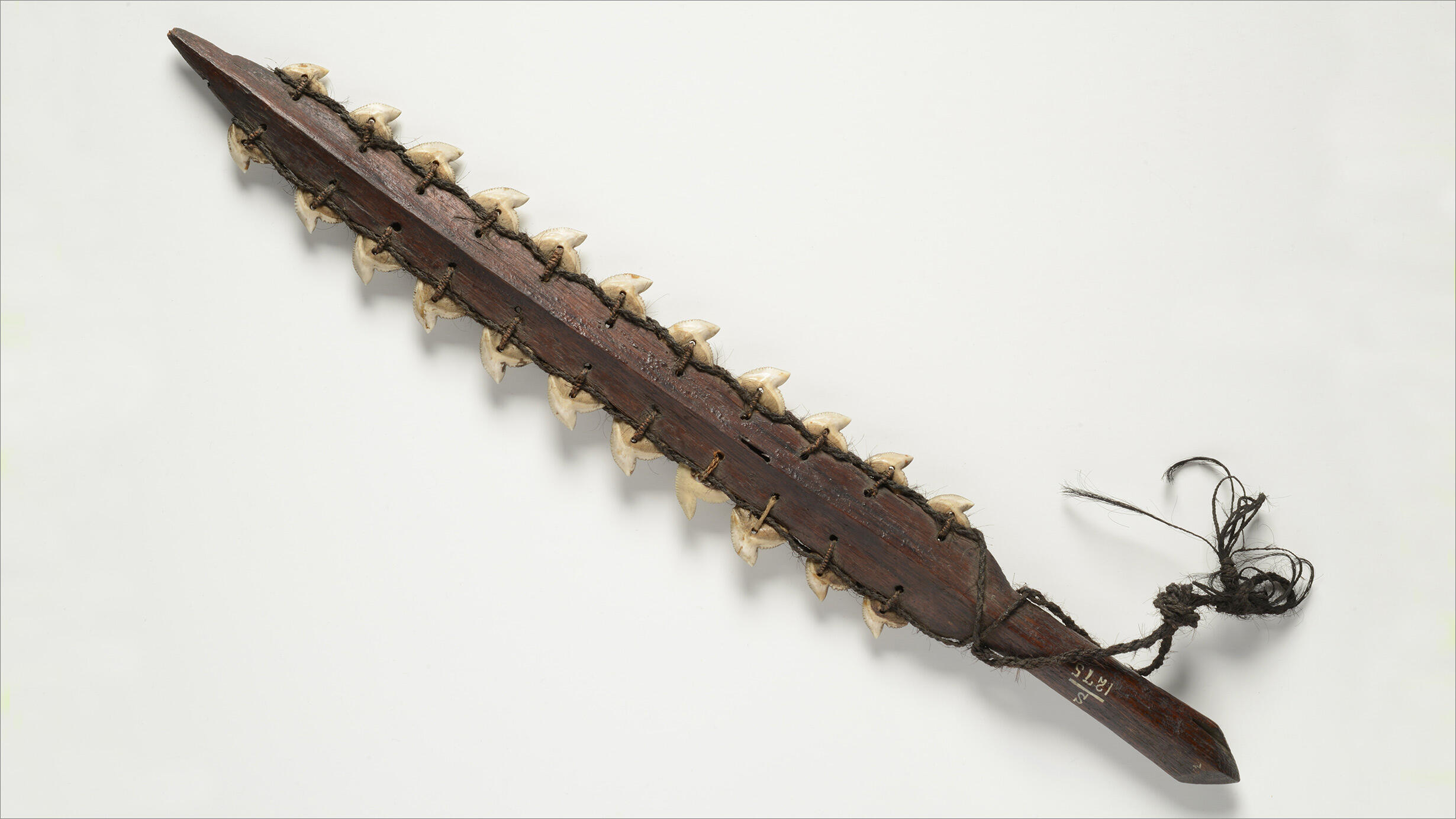 Shark-tooth weapons from the Republic of Kiribati varied in size and shape, from 10–15 foot long spears to short swords and smaller, multiuse tools that could be used as weapons or eating utensils.
Shark-tooth weapons from the Republic of Kiribati varied in size and shape, from 10–15 foot long spears to short swords and smaller, multiuse tools that could be used as weapons or eating utensils.C. Chesek/©AMNH
Sharks’ razor-sharp teeth help these predators dominate the waters. That hasn’t gone unnoticed by humans: in the 19th century, the Indigenous peoples of the Republic of Kiribati, an archipelago east of Papua New Guinea, relied on shed shark teeth to craft weapons, including this sword from the Museum’s Anthropology Collection, which is lined with rows of serrated shark teeth attached with braided coconut fiber.
Sharks played a role in multiple facets of Indigenous Kiribati culture, from origin stories to ceremonies that signified the rite of passage for young men into adulthood. Special implements were also produced for the purpose of shark fishing, such as whalebone clubs and multi-sided bludgeons.
Such weapons can vary greatly depending on the type of combat they were made for and the age and sex of the warrior, according to an article by Jean Michel Massing in the journal Pacific Arts. The largest weapons include spears that measure 10–15 feet long and are topped with barbs from another group of cartilaginous fish, stingrays. A three-pronged weapon is distinctive for its crossguards lined with shark teeth. And some smaller objects functioned as multipurpose tools used either as an eating utensil or a weapon.
M. Shanley/© AMNH
An extensive collection of shark-tooth weapons—some of which are currently on display in the Margaret Mead Hall of Pacific Peoples—came to the Museum between 1891 and 1893. “There are over 100 shark-tooth weapons from Kiribati in the Museum’s Pacific Ethnology Collection, from 12-inch knives to 14-foot thrusting spears,” says Paul Beelitz, director of collections and archives in the Museum’s Division of Anthropology.
Today, these artifacts offer an extensive visual record of traditional Kiribati warfare. And because they include stable biological materials, they are also helping researchers track changes in the region’s biodiversity over time.
S. Garner/Wikimedia Commons
Museum Research Associate Joshua Drew and colleagues have closely examined weapons and cross-referenced these artifacts with holdings in the Museum’s Ichthyology Collection to identify which shark species’ teeth were used in making the weaponry, publishing their findings in the online journal PLOS ONE. The team discovered that teeth from two species of shark—Carcharhinus obscurus and Carcharhinus sorrah—had been used extensively in Kiribati weapons. But these two species can no longer be found in contemporary surveys of local shark populations, indicating a significant change in the region’s marine apex predators since the implements were crafted.
“We now know that there were two species of shark living in the waters around Kiribati 150 years ago, but we wouldn’t have known about them in any other way than by examining these weapons closely,” says Drew.
A version of this story appeared in the Spring issue of the Member magazine, Rotunda.